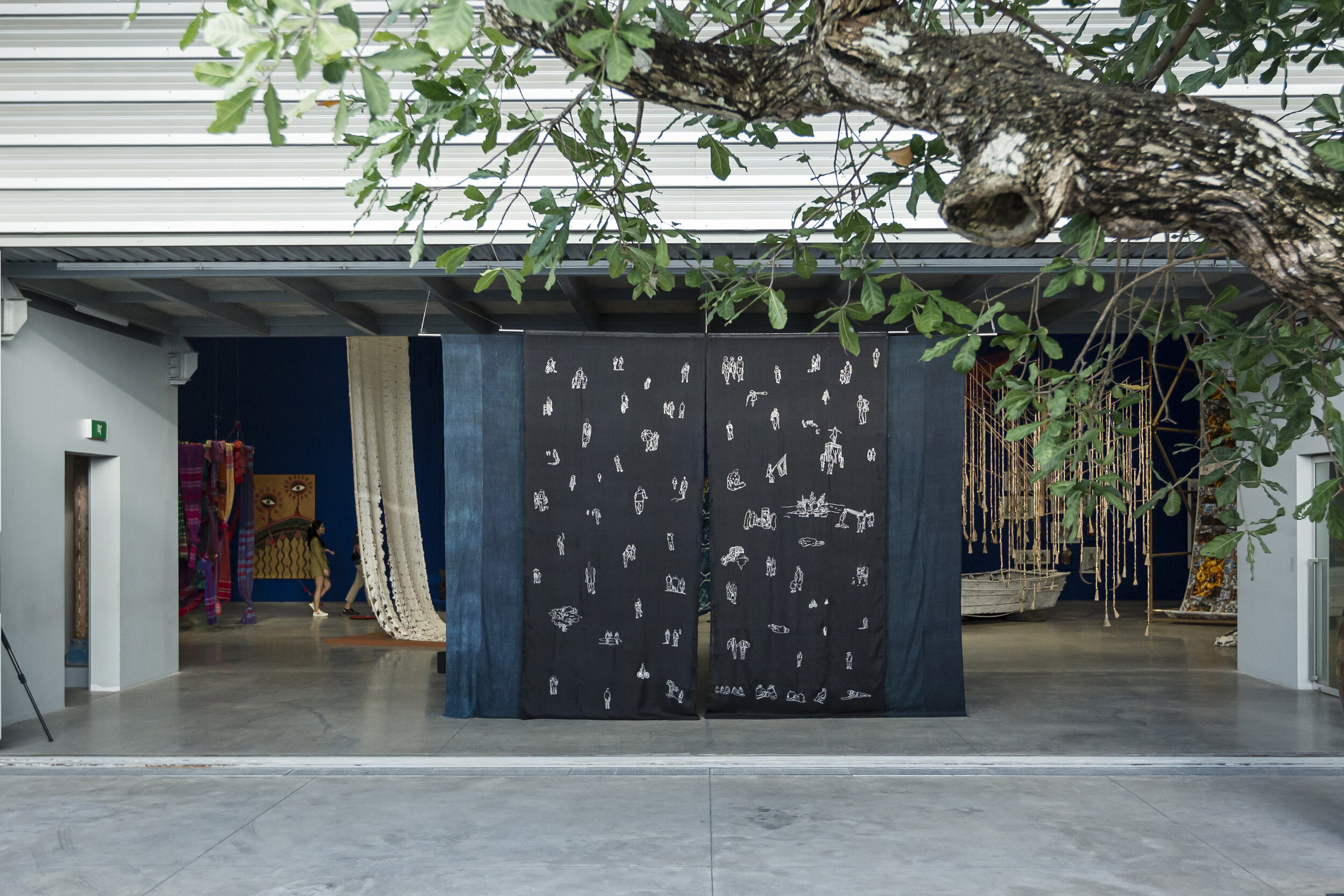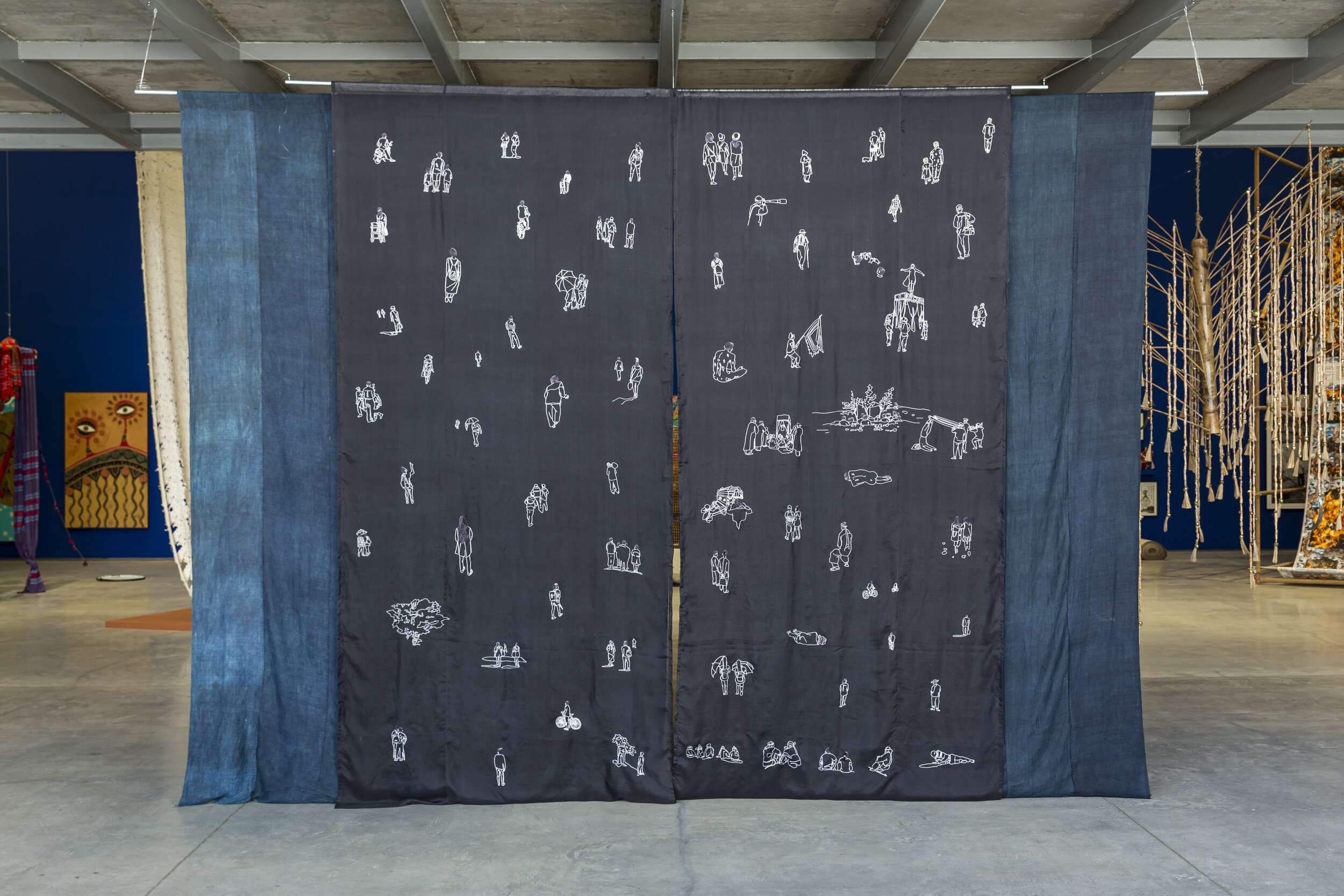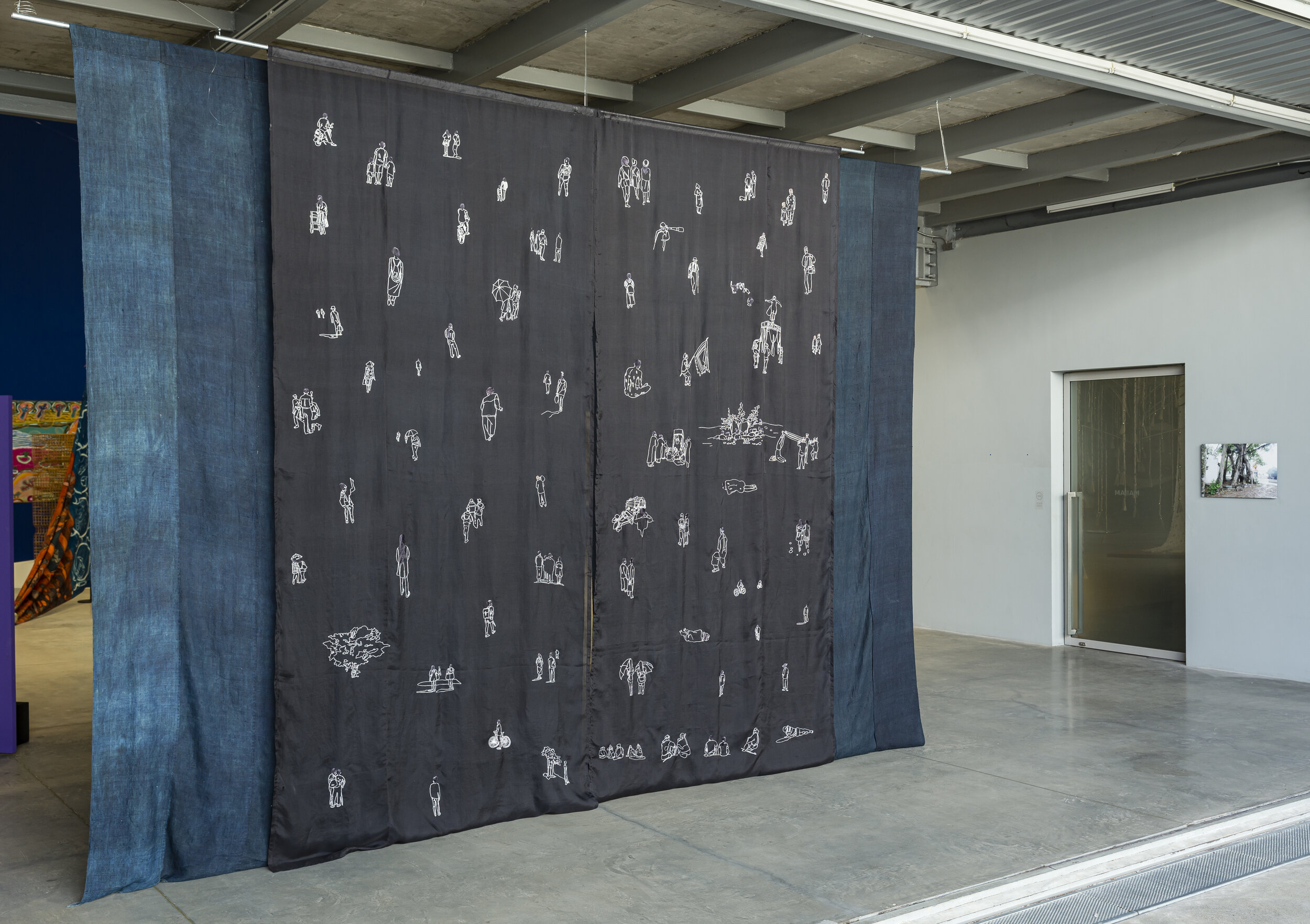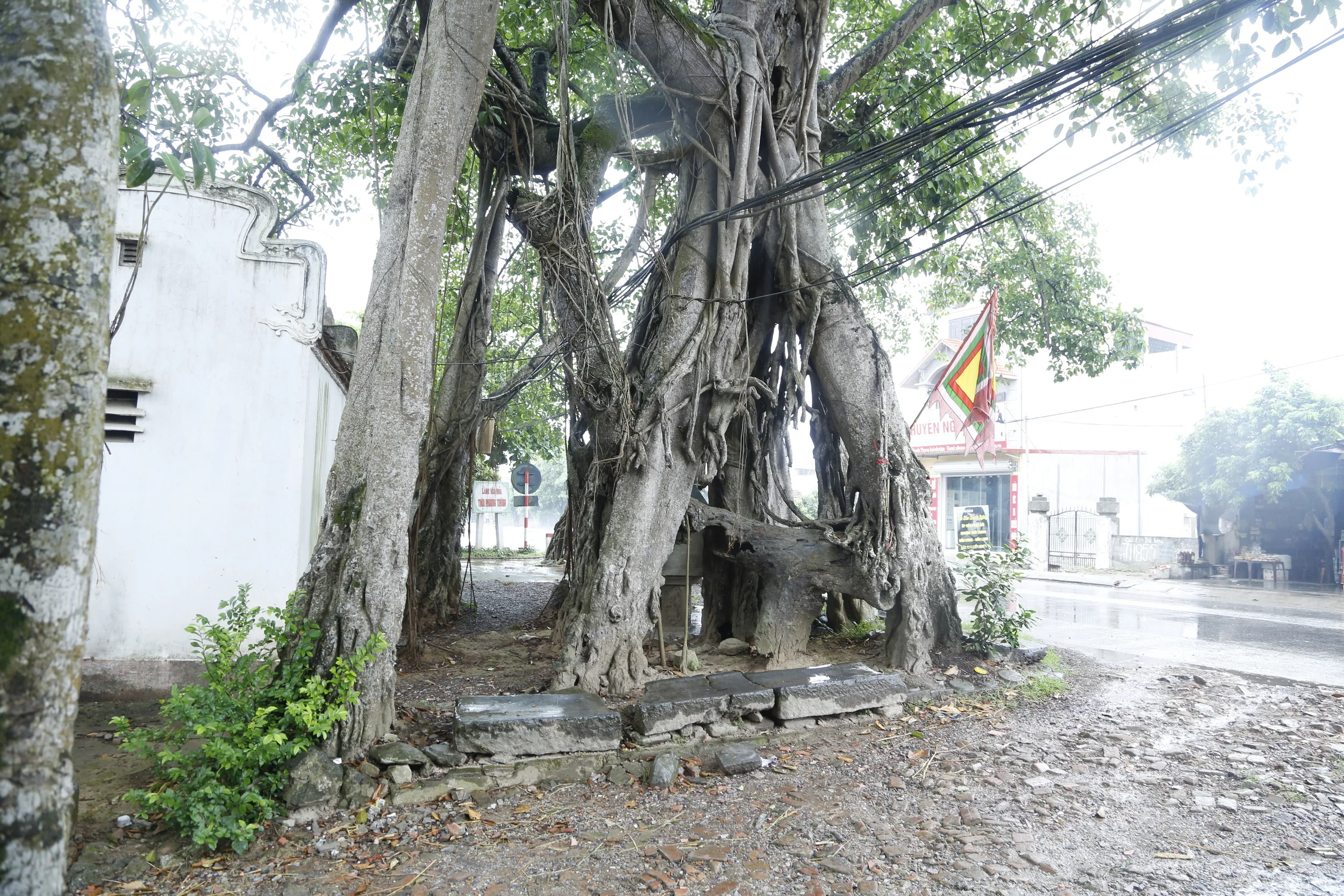Man Looking Towards Darkness
2016
Curtain made from Indigo dyed jute fabric, silk, hand embroidery, framed document, photograph
Curtain: 310cm x 350cm
Photograph: 40cm x 60cm
_ A black curtain at the entrance of the exhibition space, the curtain is sewed using jute fabric, hand-dyed with dark indigo. These fabrics are woven by Tay women living in Cao Bang province, using a traditional method. Jute fabric weaving is a dying tradition, because it is an uneconomic and time-consuming process that requires skillful hands and organic materials.
_ A photograph captures three stones that lie under an ancient banyan tree in Phuong Thong village, which is in the Tien Lu district of the Hung Yen city. During the Japanese occupation of Indochina (1940-1945), The Japanese built the Dai Nam jute factory in this area. It was a part of the compulsory sale of rice to the state and industrial plantation campaigns such as “uproot rice, grow jute,” and resulted in the horrific famine of 1945 that killed 2 million Vietnamese people. For a long time, these stones were used to detach jute fiber for factory use. Nowadays, the villagers no longer grow jute. The stones become a resting place under the banyan tree.
_ A document to borrow the stones from the exhibition organizer
I found these stones by chance. I simply thought that I could bring them to the exhibition. However, it was an unsuccessful conversation between me (the artist), the local government, and the local people. Even though I got the approval from the local government, the villagers did not agree to let us borrow the stones for the exhibition. For them, the place where the stones lie is a zone of spiritual beliefs, where the ancient banyan tree, the communal house, and the historic memories locate.




